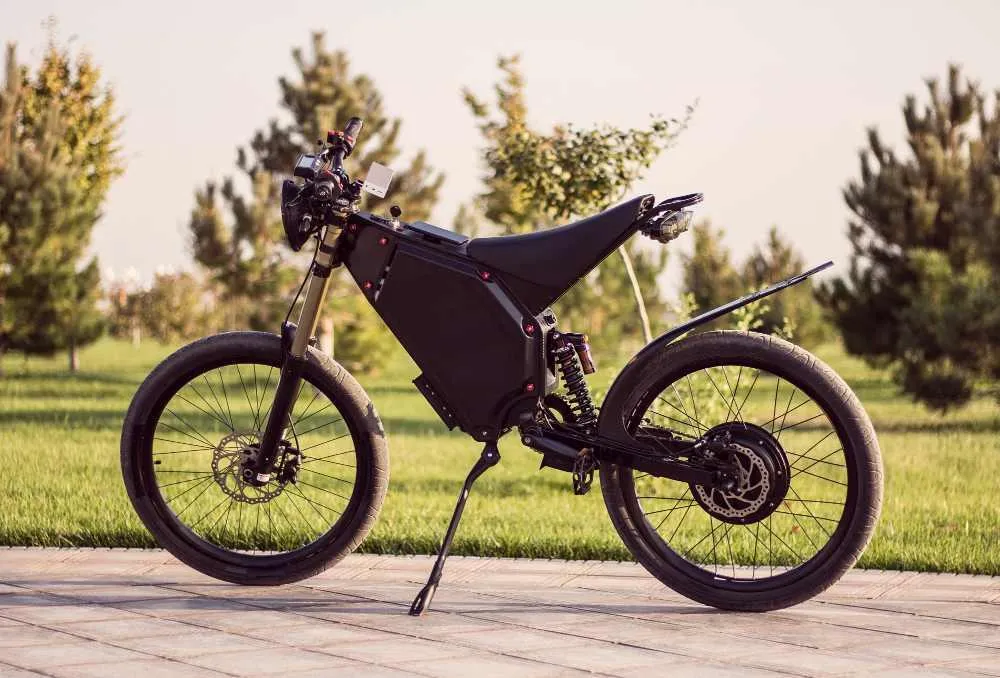
How to Make Your E-Bike Street Legal: A Step-by-Step Guide
Electric bikes are reshaping transportation, offering a sustainable and exciting way to navigate urban streets, suburban paths, or rural trails. Whether you ride a modest 300-watt model or a powerful 5000W beast, ensuring your e-bike complies with public road regulations prevents fines and boosts confidence. State laws and DMV processes vary widely, creating confusion for riders.
This guide provides a clear path to make your e-bike street legal, covering classifications, state rules, registration, and safety upgrades. By the end, you’ll know how to ride legally across the U.S.
Key Takeaways
Federal e-bike classifications and their impact on road use.
State-specific regulations for licensing, helmets, and insurance.
Steps to register and title your e-bike efficiently.
Safety features needed for compliance.
Risks of modifying e-bikes and how to stay legal.
Understanding E-Bike Classes
Knowing your e-bike’s classification is the first step to making it street legal. The U.S. uses a three-class system based on speed, power, and operation, which determines where you can ride and what compliance steps are required. Misclassifying your e-bike can lead to penalties, so let’s explore each class.
Class 1 e-bikes use pedal-assist, where the motor engages only when you pedal, with a top speed of 20 mph and a motor under 750 watts. A 300-watt e-bike, for instance, reaches about 15-20 mph, ideal for bike lanes and trails without registration in most states. These bikes blend seamlessly with traditional bicycles, making them popular for urban commuters. Class 2 e-bikes also cap at 20 mph but feature a throttle, allowing motor propulsion without pedaling. Throttle-controlled e-bikes are legal in many states but may face trail restrictions due to their motor-driven nature.
Class 3 e-bikes, also pedal-assist, reach up to 28 mph and require a speedometer. A 750-watt e-bike typically fits here, hitting 20-28 mph depending on its setup. These face stricter rules, like bans from some bike lanes, and may need registration in states like California or New York. There’s no Class 4 e-bike category in the U.S.; anything beyond Class 3 is treated as a moped or motorcycle, requiring additional compliance.
High-powered e-bikes exceed these limits. A 1000-watt e-bike kit can push 30-35 mph, while a 2000W 52V e-bike reaches 40 mph. A 3000-watt e-bike hits 45-50 mph, a 5000W e-bike or 5000W 72V model can reach 50-60 mph, and an 8000-watt e-bike, equating to about 10.7 horsepower, may exceed 60 mph.
A 10,000W e-bike or 20,000W e-bike could hit 70 mph or more, like some Sur-Ron models. For example, a Sur-Ron reaching 70 mph requires moped or motorcycle registration. Similarly, a 48V system typically hits 25-30 mph, a 52V reaches 30-35 mph, and a 72V can surpass 50 mph, depending on rider weight and terrain.
Modifying e-bikes to go faster is risky. A speed limiter, often a green or white speed limiter wire near the controller or a speed sensor on the wheel hub, caps performance to meet class limits. Removing it, such as on a Class 3 e-bike to unlock class 3 e-bike speeds beyond 28 mph, can make it illegal without registration. Unlocking an e-bike speed limit or tweaking a 1000W e-bike kit to exceed limits risks fines or confiscation.
Changing e-bike to mph displays or boosting power, like modifying a 300 watts model to hit higher speeds, can also violate state laws. Modifying an e-bike in this way, especially for high-powered models, is illegal to modify an e-bike if it bypasses compliance standards.
The motor’s quality matters for performance and legality. Bafang is a top choice for its reliable, high-powered kits, ideal for conversions. Bosch and Shimano also offer durable options for compliance. To check for a speed limiter, inspect wiring near the controller or wheel hub. If unsure, review your e-bike’s manual or consult a professional to confirm its class. This clarity prevents legal issues and guides your next steps.
State-Specific Requirements
Each state sets its own rules for e-bikes, affecting licensing, helmets, insurance, and road use. This variation means a Class 1 e-bike might be legal on bike lanes in one state but restricted elsewhere, while high-powered models face stricter scrutiny. Let’s examine key states to understand compliance needs.
In California, Class 1 and 2 e-bikes, limited to 20 mph, are treated as bicycles, needing no license or registration. This suits urban riders using bike lanes or trails. Class 3 e-bikes, reaching 28 mph, require riders to be at least 16 and wear a helmet. High-powered e-bikes, like a 5000W 72V in MPH model hitting 50-60 mph or a 3000W e-bike at 45-50 mph, are classified as mopeds, requiring an M1 or M2 license and electric bike registration and licensing.
Riding an unregistered high-powered e-bike, such as a 2000W 52V in MPH hitting 40 mph, risks a $100-$250 fine or impoundment. Helmet laws by state vary; California mandates helmets for riders under 18. Electric bike insurance requirements are optional here, but coverage protects against theft or accidents. For example, rider Emily from Los Angeles registered her 1000W e-bike kit as a moped, avoiding a $150 fine.
New York classifies e-bikes as Class A, B, or C limited-use motorcycles. Class 1 and 2 e-bikes don’t need registration, but Class 3 and high-powered models, like an 8000W in MPH exceeding 60 mph or a 10,000W e-bike hitting 70 MPH, require registration and liability insurance. Class A e-bikes (30-40 mph) need a motorcycle license, and all riders must wear helmets.
An illegal e-bike, like a modified Sur-Ron, risks fines up to $500 or confiscation in New York City. E-bikes covered under homeowners insurance may apply to low-powered models, but high-powered ones need separate policies. Rider Tom from Brooklyn registered his 20,000W e-bike, ensuring legal road use.
In Virginia, Class 1 and 2 e-bikes are bicycles, needing no registration or license. High-powered e-bikes, like a 1000W e-bike kit pushing 30-35 mph, may require moped registration if exceeding 20 mph or 750W. Helmet laws by state here mandate helmets for riders under 15, and insurance is optional but wise.
An unregistered 5000W e-bike could face a $50-$200 fine. Tutto e-bikes, which may not meet DOT standards, can be made legal with upgrades and registration. Highways are off-limits unless the e-bike is registered as a motorcycle, as high speeds like 8000W models pose risks.
Other states vary. Texas allows Class 1 and 2 e-bikes on bike lanes without registration, but Class 3 may need a license. Florida exempts e-bikes under 20 mph, but faster models require moped tags. Driving electric bikes on the highway is generally prohibited unless registered as motorcycles. Modifying an e-bike to exceed speed limits, like tweaking a 750-watt e-bike to surpass 28 mph, risks legal issues.
Research your state’s DMV website or consult an expert to avoid penalties, especially in high-tax states like California, where use taxes may apply without proper registration strategies.
Registration and Titling Process

Registering and titling your e-bike is essential for street legality, especially for high-powered models exceeding Class 3 limits. This process varies by state, but a streamlined approach can save time and money. Street Legal Hookup uses a Montana LLC setup to bypass sales taxes and inspections, a legal method effective nationwide.
Start by gathering your e-bike’s details: make, model, wattage (e.g., 750 watt eBike, 3000W, or 10,000W), and voltage (e.g., 48V in mph, 52V in MPH, or 72V in mph). A 48V system hits 25-30 mph, a 52V reaches 30-35 mph, and a 72V exceeds 50 mph.
If your e-bike lacks a VIN number requirement, we help obtain one, as 44 states mandate it for registration. Submit these details online, then mail your title or bill of sale securely. The Montana LLC avoids sales tax and residency rules, as Montana skips emissions and inspections, unlike states like California.
Permanent plates arrive in 3-6 weeks, with 40-day temporary tags available in one business day. This saved rider Jake from Texas $7,500 on his 2000W 52V e-bike. Curious about simplifying your electric bike registration and licensing? Explore our online process to skip DMV hassles.
Safety and Compliance Features
Street-legal e-bikes need specific safety features to meet state and federal standards, ensuring safety and visibility. These are critical for high-powered models like a 20,000W e-bike exceeding 70 MPH or a 5000W model hitting 50-60 mph.
Install DOT-compliant headlights, taillights, and brake lights for visibility, especially at night. Turn signals are required in states like California for moped-classified e-bikes. Rearview mirrors and a horn alert drivers, vital for high-speed models like an 8000W e-bike. Use DOT-approved tires for road grip, as off-road tires may fail compliance.
If your e-bike lacks a VIN, a service can assign one. Street legal e-bike conversion kits bundle these components, making models like Tutto or Sur-Ron road-ready.
Avoid removing the speed limiter on an e-bike, such as cutting the speed limiter wire near the controller or speed sensor on the wheel hub. This can boost a 1000W e-bike kit to illegal speeds, risking fines. Bafang, a leading e-bike motor, offers reliable kits for conversions. These upgrades ensure your e-bike, from a 300 watts model to a most powerful e-bike, meets legal standards.
Why Pick Street Legal Hookup? Your Success, Our Guarantee
Turning your e-bike into a street-legal ride should be fast, affordable, and stress-free. Street Legal Hookup simplifies every step through our proven Montana LLC process, helping you avoid state taxes, inspections, and delays while securing permanent plates that let you ride anywhere in the U.S.
100% Online Registration: Title, register, and plate your e-bike without setting foot in a DMV.
Legal Nationwide Coverage: Get your e-bike street-legal across all 50 states with no residency requirements.
Save Thousands in Taxes: Avoid $5,000–$15,000 in state taxes through Montana’s no-sales-tax system.
Permanent Plates, No Renewals: Vehicles over 11 years old qualify for lifetime registration and plates.
Fast Turnaround: Temporary tags arrive within 1 business day, permanent plates in as little as 3 weeks.
No Emissions or Inspection Hassles: Skip smog tests, speed limit verifications, or modification checks.
Expert Support for High-Power Models: We handle complex e-bikes, from 1000W kits to 20,000W conversions.
Secure Digital Dashboard: Upload documents, track your registration, and get updates in real time.
Trusted by Riders Nationwide: Thousands of e-bike owners rely on us for fast, compliant, and permanent registration.
Street Legal Hookup gives you more than legal plates; it gives you freedom. Whether you ride a 750W commuter e-bike or a 5000W performance model, we make it simple to stay compliant, protected, and ready to hit the road.
FAQs on E-Bike Legality
Here are answers to common concerns about e-bike compliance, based on rider questions.
What makes an electric bike road legal?
A road-legal e-bike has DOT-compliant lights, mirrors, horn, and tires, plus registration for high-powered models. States like California require moped registration for e-bikes exceeding 750W or 20 mph.
How fast can an e-bike go legally?
Class 1 and 2 e-bikes are limited to 20 mph, Class 3 to 28 mph. High-powered e-bikes, like a 5000W model, need motorcycle registration to exceed these speeds legally.
Do e-bikes need to be registered in VA?
Virginia treats Class 1 and 2 e-bikes as bicycles, needing no registration. High-powered e-bikes (>750W or 20 mph) may require moped registration.
What is a Class 3 e-bike?
A Class 3 e-bike is pedal-assist, reaches 28 mph, and requires a speedometer. It’s restricted from some bike lanes and may need registration.
Do you need insurance on an electric bike?
Insurance varies by state: New York requires it for high-powered e-bikes, while California and Virginia recommend it for liability protection.
Conclusion
Making your e-bike street legal ensures worry-free riding, whether it’s a 300 watts Class 1 model or a 20,000W powerhouse. Understand e-bike classes, navigate e-bike street legal requirements by state, secure electric bike registration and licensing, and add safety features like turn signals and DOT tires. Avoid modifying an e-bike to bypass speed limits, as this risks fines or confiscation. Street Legal Hookup’s Montana LLC setup saved riders like John from California $10,000 on registration.
Start your street-legal journey today with our online platform for a seamless, cost-effective process.



